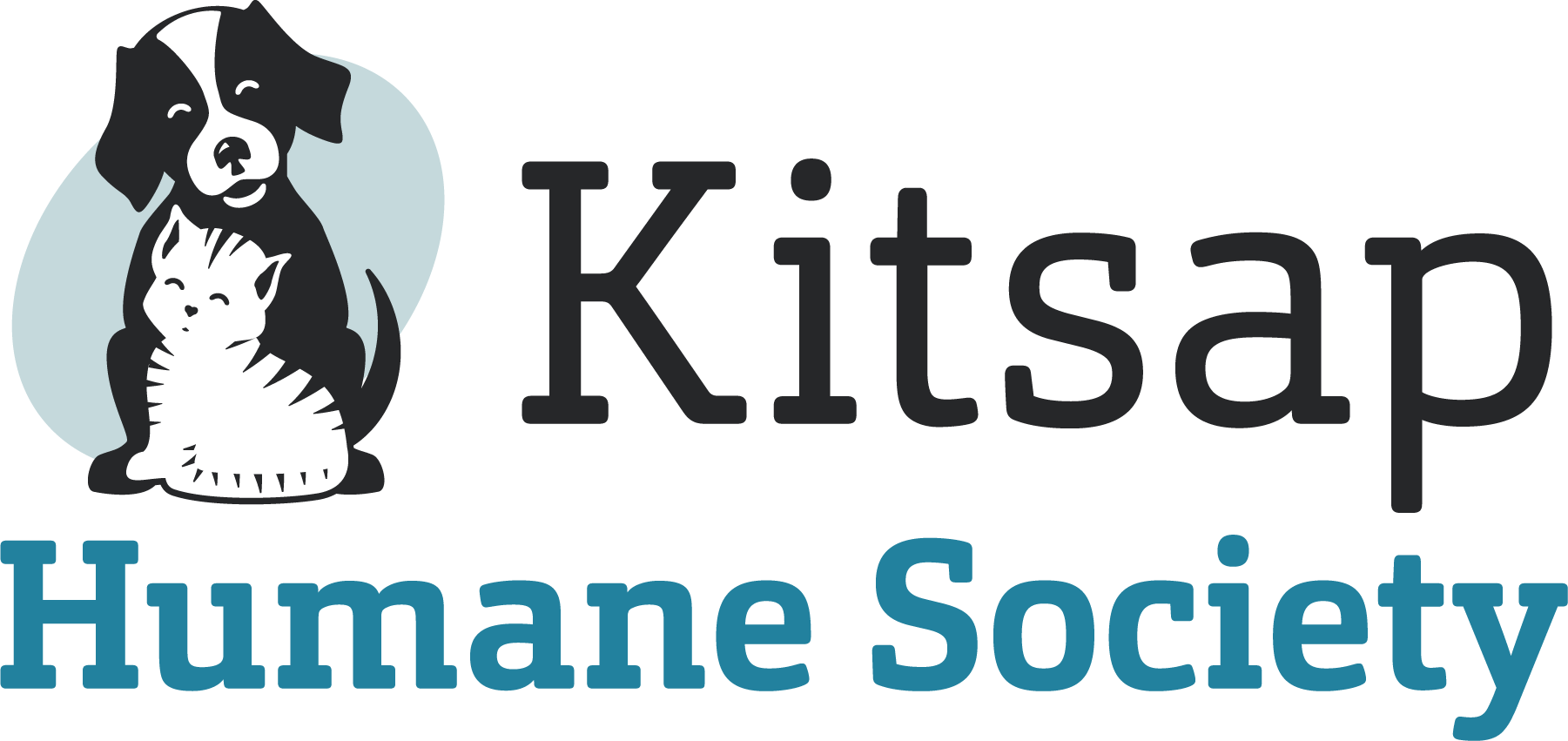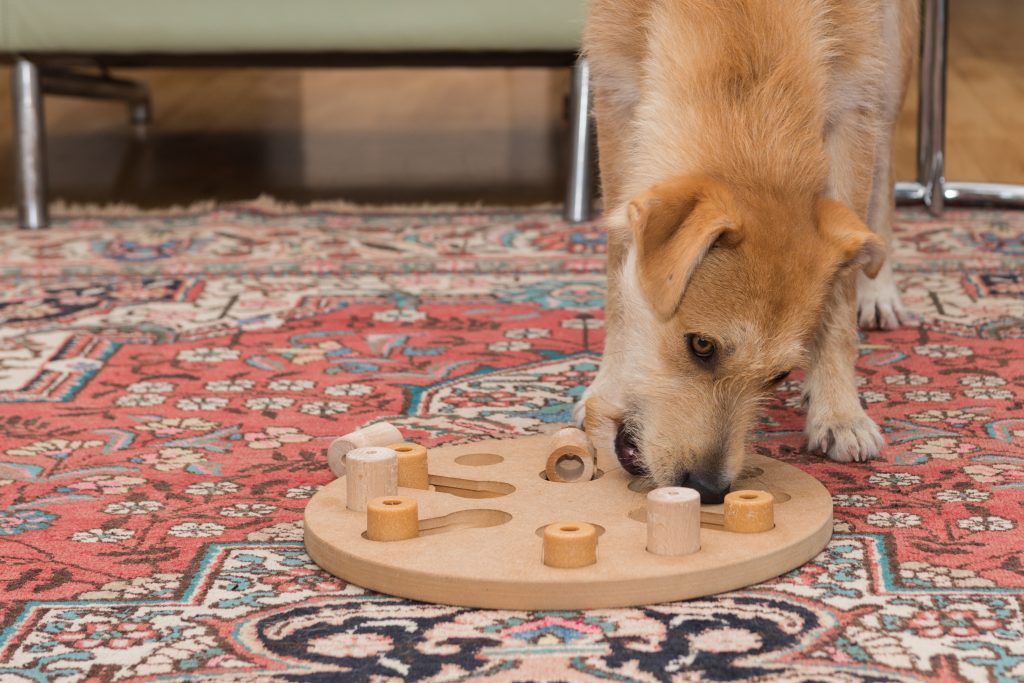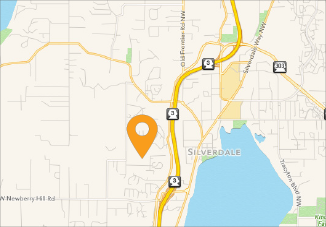Avoid Cabin Fever with Pets!
February 22, 2018
It’s gray, it’s rainy, and we’ve all been cooped up inside our houses more than we’d like. It’s not surprising that pets and people are both at risk of experiencing “cabin fever” and engaging in unwanted behaviors due to boredom and lack of exercise! Here are some easy tips to help you AND your cats and dogs ward off cabin fever!
One simple thing to incorporate into your daily routine is using food puzzles with your pets, either for feeding their meals, or even just for giving treats. You can find food puzzles for both cats and dogs online, at most pet stores, or you can make your own! Food puzzles are items that can contain kibble or treats that make pets “work” for their food. Some are round or oval objects with holes that require the pet to roll it around on the ground to make the food fall out. Others require the pet to move different pieces around with their nose or paw to access the food hidden underneath.
There are also puzzles called slow feeders that look more like bowls or trays with spirals/mazes that just takes them a little longer to eat the food. You can also make cheap, easy homemade food puzzles with cupcake tins, or even old cereal boxes! Most pets have preferences of either food puzzles that are stationary, or that move around- figure out which your pet prefers! If your pet has never used a food puzzle, start easy with slow feeders or cupcake tins. As you make it more difficult, add more exciting food or treats to it to encourage the dog to challenge themselves. Many dogs “fail” at food puzzles because they are too hard and they struggle to get the food out. If your pet won’t use or eat out of a food puzzle, make sure they are still getting their daily meals.
Bored dogs often enjoy chewing, so before your shoe or couch cushion becomes their target, invest in some good chew toys! Kong toys can be stuffed with peanut butter or wet food and then frozen, which prolongs the pleasure of noshing on them. You can also give your dog “bully sticks” or “pigs ears” to keep them occupied during inside time.
Despite the weather, you can still “exercise” your pets inside. Mental exercise is just as important as physical exercise and can even tire a dog out faster. Training can be hard work for your pet’s brain! Basic commands and tricks like “stay,” “shake” or “roll over” can be fun for dogs to learn. And training doesn’t have to take a long time. Even 15 minutes can help tire out his brain.
Cats who are used to roaming outside during nice weather are safer inside during the winter, but still need exercise. Invest in a laser pointer or wand toy for your cat to encourage them to run, jump, and climb. Cats might also enjoy exploring and grazing on potted “cat grass” or cat nip plants, which can be bought at many pet stores and garden centers.
Another fun thing you can do indoors is “nose work.” There are books, online resources and trainers available who teach how to get started on nose work and different techniques, but here’s an easy way to get started:
- Grab five boxes and lots of smelly treats your dog really likes. Start with boxes that are easy for your dog to fit his head into and that don’t have lids or flaps.
- Place your dog away in another room.
- Set the boxes up in a circle on the floor and put a treat in every box.
- Let your dog out, say “find it!” and encourage her to approach the boxes.
- Follow closely behind her as she smells the boxes. Ignore her if she looks to your for direction. You want her to focus on using her nose, not listen to your directions.
- When she sticks her nose into a box, praise her and put a couple more treats into the box while her head is still inside. Then let her move on to the next box and repeat.
- After a few minutes, say “all done!” and move her back to the crate/other room. It’s okay if she doesn’t find all the treats in the beginning!
- Repeat one or two more times and then call it quits for the day. Most dogs are good after about 15 minutes of using their nose and are tired, and you want to stop while your dog still has fun with the game.
- Don’t forget to reduce the dog’s food at mealtime to compensate for calories eaten during nose work.
Over time, you can start using harder boxes, spreading them further about the room, and even placing them on different levels to encourage your dog to search for the smells. When it’s warmer, you can even do nose work outside!




